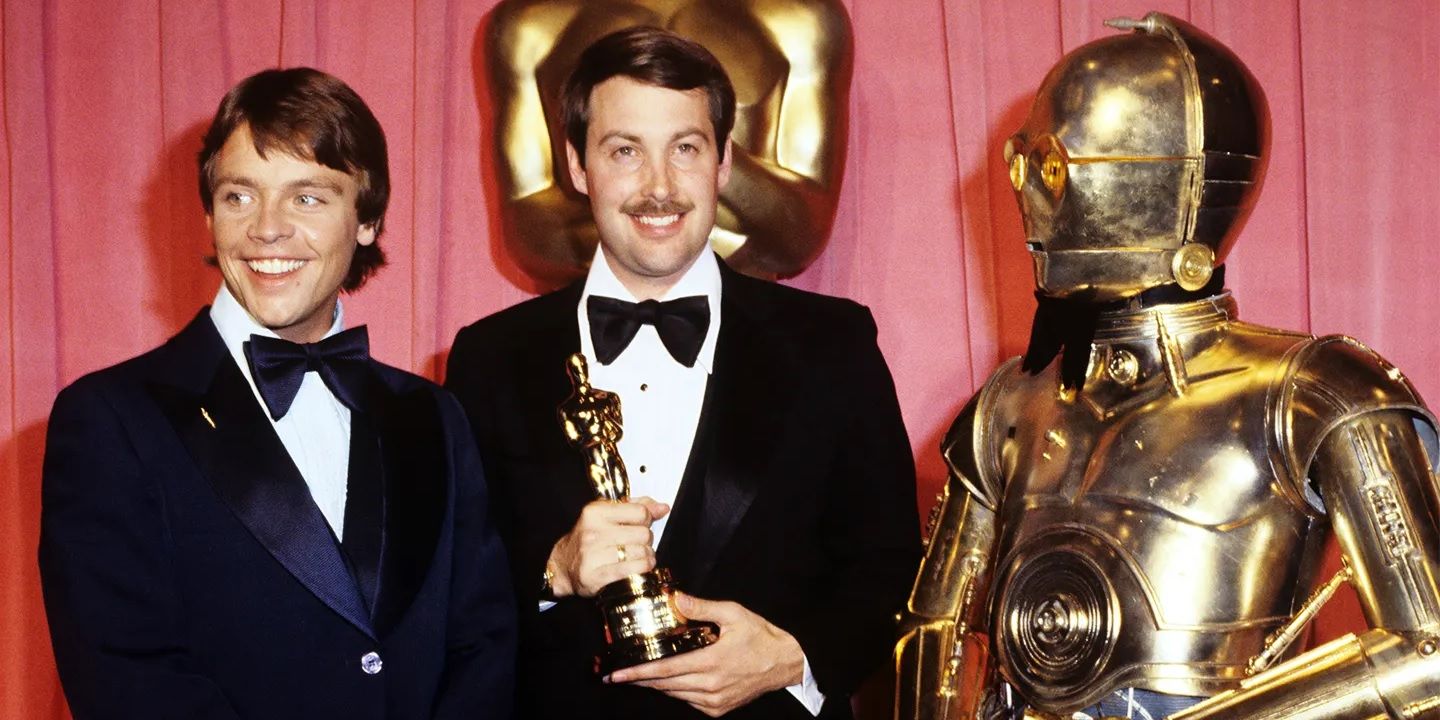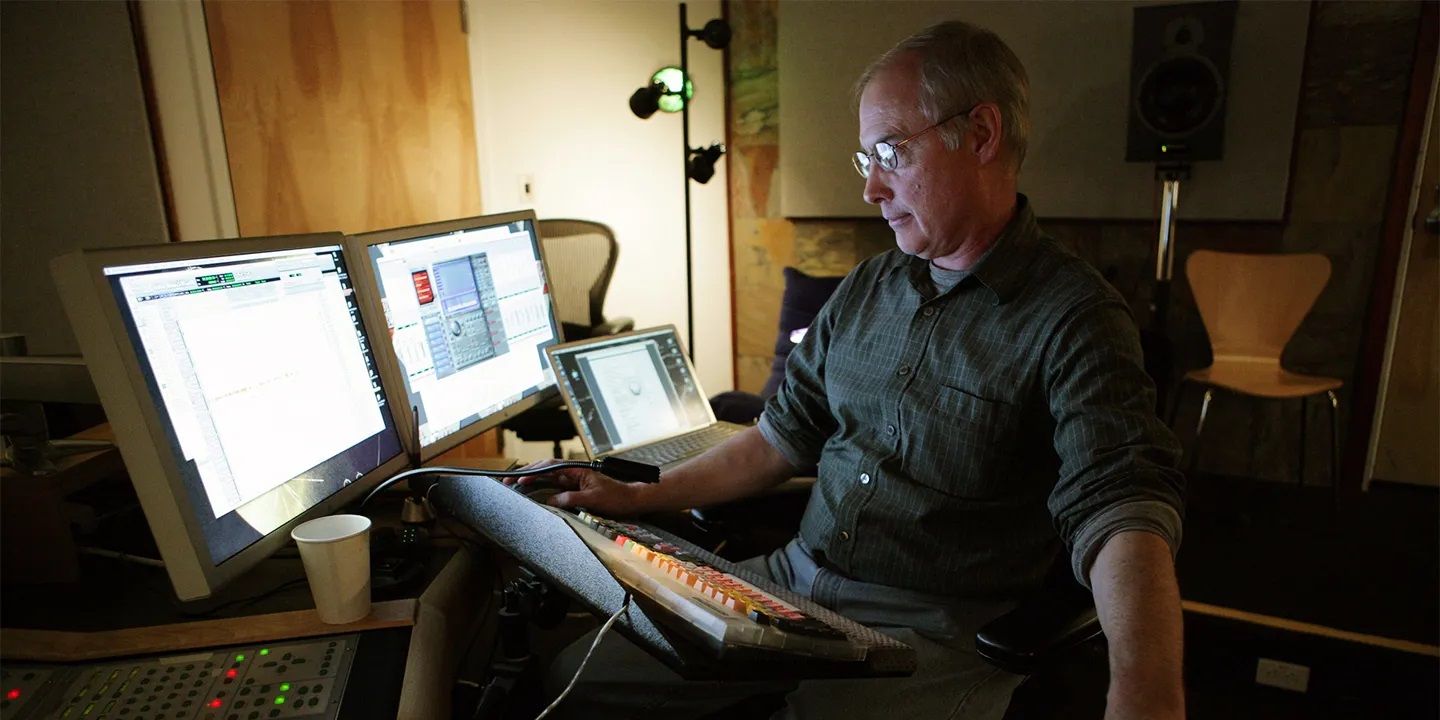While creator George Lucas, composer John Williams, and cast members like Mark Hamill and Carrie Fisher receive plenty of praise from the Star Wars fan base – and the dream team of Favreau and Filoni has quickly amassed a religious following, thanks to their work on The Mandalorian – sound designer Ben Burtt is rarely mentioned in fan discussions. But Burtt’s sound effects have arguably contributed just as much to the familiar feel of Star Wars as Williams, any of the actors, or even Lucas himself.
Burtt is responsible for countless iconic sounds that Star Wars wouldn’t be the same without: Darth Vader’s breathing, the hum of a lightsaber, R2-D2’s beeps-and-whirs “voice,” the pew-pew of a blaster, the roar of a TIE fighter, the whoosh into hyperspace – there was no frame of reference for any of these sounds and Burtt nailed every single one.
Audiences tend to take sound effects for granted, because when they’re done well, they’re barely noticeable. While music and visuals boldly announce themselves to the viewer, sound effects are supposed to blend into the world of the movie. In the Harry Potter movies, the sound of spells being cast is perfect and fits so seamlessly into the world that nobody questions it, which means the sound team gets no credit. And that’s a travesty, because the work that sound designers do on sci-fi and fantasy movies like Star Wars and Harry Potter – assigning sounds to things that don’t exist – is a nearly insurmountable challenge.
Ben Burtt had to get creative to come up with the sounds of Star Wars. Vader’s breathing was created by sticking a microphone in the regulator of scuba breathing apparatus. R2-D2’s voice was created using “a 50/50 mix of electronic synthesizer-generated sound and [Burtt’s] voice making funny inflections.” The hum of a lightsaber was created by combining the sounds of a faulty connecting cable and several projector motors locked together. To create Chewbacca’s unmistakable Wookiee-speak (technically called Shyriiwook), Burtt catalogued the sounds of a bunch of animals – including badgers, bears, and walruses – and painstakingly categorized them by their perceived emotion before cutting all these sounds together to form Chewie’s speech.
There are a bunch of memorable Star Wars scenes that wouldn’t have nearly as much impact without Burtt’s contributions to the soundtrack. Vader Force-choking Admiral Motti is one of the most intense moments in the entire saga, and while David Prowse’s intimidating screen presence and Richard LeParmentier’s commitment to being magically strangled go a long way, the booming, unnerving ambience that Burtt layers over the scene is ultimately what makes it work so well.
In a lot of Star Wars’ big action set pieces, the sound effects are drowned out by John Williams’ sweeping score, but the first few laps of the Boonta Eve Classic podracing sequence in The Phantom Menace are music-free. The only sounds on the soundtrack before Anakin and Sebulba’s rivalry intensifies are the deafening growl of the podracing engines and the pods themselves bounding across the canyons of Tatooine. In order to bring the 800 km/h podracers to life, Burtt and his team dialed up the sounds of Porsche and Mustang engines with synthesizers and wave-table chopper. In the absence of Williams’ orchestrations, Burtt’s sound design creates its own kind of hyonotic rhythm.
Burtt’s contributions to pop culture don’t stop at Star Wars, either. He’s also responsible for a bunch of other unforgettable movie sounds, like WALL-E’s voice and the crack of Indiana Jones’ whip. He’s the recipient of four Academy Awards, three of which were for non-Star Wars projects. He’s even credited with popularizing the “Wilhelm scream,” which has been used as an in-joke in everything from Toy Story to Game of Thrones to Red Dead Redemption.
And on top of that, Burtt’s contributions to Star Wars don’t stop at his sound effects. He also edited all three prequel movies (although Paul Martin Smith was credited as a co-editor on Episode I and Roger Barton was credited as a co-editor on Episode III). This could place the blame on Burtt for some of the prequels’ more drawn-out stretches, like Anakin and Padmé’s painfully cringeworthy romantic scenes in Attack of the Clones, but trying to overrule George Lucas’ judgment on how to tell a Star Wars story sounds like a bad idea.
Overall, Burtt is one of Star Wars’ greatest assets and he’s been informing the uniquely pulpy style of the saga since the very beginning. Even seemingly insignificant sounds like a door sliding shut on the Death Star or an X-wing’s wings opening up go a lot way toward immersing audiences in a galaxy far, far away. Hopefully, Star Wars fans on Reddit will honor Burtt’s contributions to the saga with an “Are we blind? Deploy the birthday wishes!” post when his birthday rolls around on July 12 to show some appreciation.



